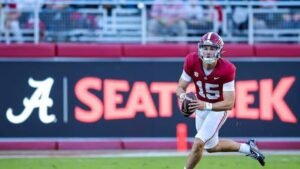
In the rich history of Alabama football, few moments stand out as more transformative than the bold offensive change made in 1971. It wasn’t just a schematic adjustment — it was a program-altering decision that helped define the modern era of Crimson Tide dominance.
Heading into the 1971 season, legendary head coach Bear Bryant knew his traditional power offense was no longer enough to keep up with the game’s evolution. After consecutive seasons of underwhelming results, Bryant made a stunning decision: he installed the wishbone offense, a run-heavy, triple-option attack that had just started to gain national traction thanks to Texas.
The shift was daring and risky — especially for a powerhouse like Alabama. But the results were immediate and dramatic.
In the season opener against USC — a game played in Los Angeles and famously known for its historical impact on integration in college football — Alabama’s new offense stunned the Trojans and set the tone for a new chapter. The Tide went on to finish 11-1, capturing the SEC title and launching a new decade of dominance.
From 1971 through the early 1980s, Alabama became virtually unstoppable, winning three national championships (1973, 1978, 1979) and redefining how football could be played in the SEC. The success of the wishbone not only resurrected Bryant’s legacy but also laid the foundation for Alabama’s culture of innovation and adaptability.
More than 50 years later, that 1971 decision remains one of the boldest and most impactful in program history. It was a reminder that even the most storied programs must evolve — and when they do, dynasties are born.
Alabama didn’t just change its offense. It changed its future.
